Modeling COVID-19 scenarios for the United States
- PMID: 33097835
- PMCID: PMC7806509
- DOI: 10.1038/s41591-020-1132-9
Modeling COVID-19 scenarios for the United States
Erratum in
-
Author Correction: Modeling COVID-19 scenarios for the United States.Nat Med. 2020 Dec;26(12):1950. doi: 10.1038/s41591-020-01181-w. Nat Med. 2020. PMID: 33247288 Free PMC article.
Abstract
We use COVID-19 case and mortality data from 1 February 2020 to 21 September 2020 and a deterministic SEIR (susceptible, exposed, infectious and recovered) compartmental framework to model possible trajectories of severe acute respiratory syndrome coronavirus 2 (SARS-CoV-2) infections and the effects of non-pharmaceutical interventions in the United States at the state level from 22 September 2020 through 28 February 2021. Using this SEIR model, and projections of critical driving covariates (pneumonia seasonality, mobility, testing rates and mask use per capita), we assessed scenarios of social distancing mandates and levels of mask use. Projections of current non-pharmaceutical intervention strategies by state-with social distancing mandates reinstated when a threshold of 8 deaths per million population is exceeded (reference scenario)-suggest that, cumulatively, 511,373 (469,578-578,347) lives could be lost to COVID-19 across the United States by 28 February 2021. We find that achieving universal mask use (95% mask use in public) could be sufficient to ameliorate the worst effects of epidemic resurgences in many states. Universal mask use could save an additional 129,574 (85,284-170,867) lives from September 22, 2020 through the end of February 2021, or an additional 95,814 (60,731-133,077) lives assuming a lesser adoption of mask wearing (85%), when compared to the reference scenario.
Conflict of interest statement
This study was funded by the Bill & Melinda Gates Foundation. The funders of the study had no role in study design, data collection, data analysis, data interpretation, writing of the final report or the decision to publish. A.F. reports personal fees from Kaiser Permanente and NORC and other support from Agathos, all outside the submitted work. The spouse of J.R.S. is employed by The Bill & Melinda Gates Foundation and had no role in study design, data collection, data analysis, data interpretation, writing of the manuscript or the decision to submit the manuscript for publication. The corresponding author had full access to all the data in the study and had final responsibility for the decision to submit for publication.
Figures

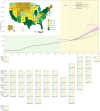


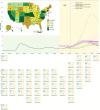
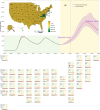
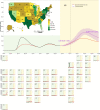

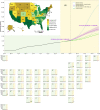
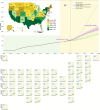
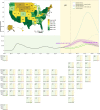

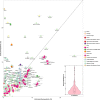
References
-
- World Health Organization. Novel coronavirus disease (2019-nCoV) Situation Report—1 (2020).
-
- World Health Organization. Coronavirus disease 2019 (COVID-19) Situation Report—163 (2020).
-
- Horton, R. The COVID-19 Catastrophe: What’s Gone Wrong and How to Stop it Happening Again. (John Wiley & Sons, 2020).
-
- Miller, I. F., Becker, A. D., Grenfell, B. T. & Metcalf, C. J. E. Disease and healthcare burden of COVID-19 in the United States. Nat. Med.26, 1212–1217 (2020). - PubMed
Publication types
MeSH terms
Grants and funding
LinkOut - more resources
Full Text Sources
Medical
Miscellaneous

